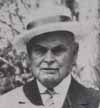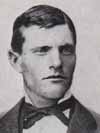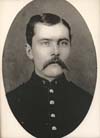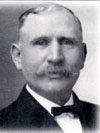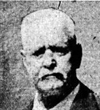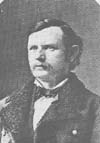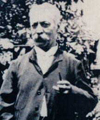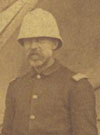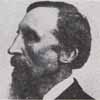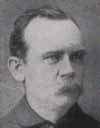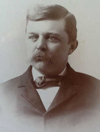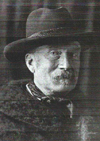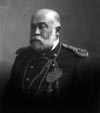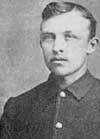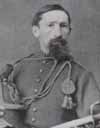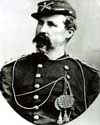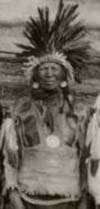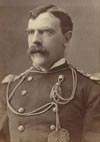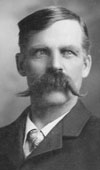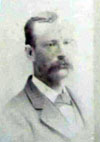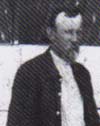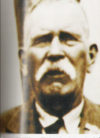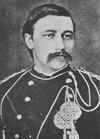Henry Moore Harrington (left) was born on April 30, 1849, in Albion, New York. He was a graduate of the United States Military Academy at West Point who served the Seventh Cavalry as a Second Lieutenant with Company C. He was killed with Custer’s Column, but his body was never positively identified.
Benjamin Beck died on April 30, 1910, in Camden, New Jersey, and was buried in Bethel Memorial Park in Pennsauken, New Jersey. He was a Private with the Band, so he was not present on the campaign.
John Roscoe Gray died in Worcester, Massachusetts, on April 30, 1915, and was buried in Woodlawn Cemetery there. He was a Private in Company B who was not present at the battle due to detached service at Powder River, Montana.
William Ephraim Morris (left) was born on May 1, 1854, in Boston, Massachusetts. He was a Private in Company M who was wounded while participating in the valley and hilltop fights during the battle.
Michael Christopher Caddle (left) died in Bismarck, North Dakota, on May 1, 1919, and was buried at the Fort Rice Cemetery in North Dakota. He was a Sergeant in Company I but was not present at the battle due to detached service at Powder River, Montana.
Henry August Lange died on May 1, 1928, in Chicago, Illinois, and was buried in the Mount Olivet Catholic Cemetery there. He was a Private with Company E who was with the pack train and in the hilltop fight.
Daniel Carroll died in Chicago on May 2, 1910, and was buried in the Mount Hope Cemetery there. He was a Sergeant with Company B at the time of the battle, but he was not present there due to detached service at Fort Abraham Lincoln, Dakota Territory.
May 5, 1877 – Sitting Bull (left) led his people into Canada.
John C. Wagoner committed suicide on May 5, 1899, in St. Paul, Minnesota. He was Chief Packer with the pack train and was wounded in the hilltop fight during the battle.
Frederick William Myers died in Washington, D.C. on May 5, 1900, and was buried in Arlington National Cemetery in Arlington, Virginia. He was a Private in Company I who was not present at the battle due to detached service. He was awarded the Medal of Honor in 1891 for his actions at White River, South Dakota, while with the 6th Cavalry.
James E. Moore was born on May 6, 1849, in Hebron, Ohio. He was a Farrier with Company B who was with the pack train and later participated in the hilltop fight.

